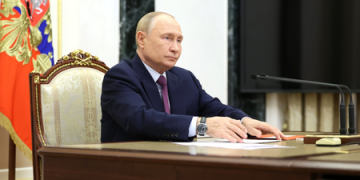It is no wonder that Florence is called one of the most beautiful cities in the world. The home of Michelangelo and Leonardo Da Vinci cannot be otherwise
Purujeet Parida
Spaghetti pasta – delicious Italian noodles that we know from ready-to-eat packs – is a proud ambassador of Italian cuisine, much like Ferrari and Lamborghini are powerful and gracious symbols of the Italian auto industry.
It is not known when Italians started making their pasta; all we know is that when Italian immigrants took their cuisine to the new land across the Atlantic in the first decade of the 20th century, they had to adapt their ingredients to those found in the new land.
In the scarce times during the depression and World Wars that were to follow, the poor immigrants did not have access to fresh vegetables like they would have had at home in Tuscany or Cordoba or Rome. They only had meat, so they tossed it onto the pan along with their traditional spices and threw in the pasta and sauce while whispering a prayer.
This happens to be the humble origin of the now world famous spaghetti and meatball pasta and also the all-meat pizza. It is authentic Italian cuisine made by those who migrated to America. To taste the unbeatable original, you have to travel to the land of their forefathers, the land of Godfather and Mafia, but also of the Pope and Michelangelo, the land of the mighty Roman Empire – the stencil for Western civilisation and the birthplace of the Renaissance – the fire which burned through the European Dark Ages and through culture and science, brought about the industrial age and modern civilisation.
Onwards to Florence then, the place synonymous with the Renaissance, the ‘karmabhoomi’ of artistic geniuses and architectural masterminds who changed the world they lived in through the sheer force of their art. It is no wonder that Florence is called one of the most beautiful cities in the world. The home of Michelangelo and Leonardo Da Vinci cannot be otherwise.
Florence was set up during Roman times on the banks of the river Arno. However, it was not until the Medici family rose to be the Bankers of Europe (and the Catholic Church) that it was put on the map with the other powerful city states of the time. The patronage of the Medicis supported most of the famous Renaissance artists we know today and this is visible in the architecture and public spaces of the historical city. Getting to the city is an easy 1.5-hour train ride from Rome but the ride takes you back in time to the medieval ages.
Modern visitors to Florence can choose from a variety of walking, cycling, bus or even Segway tours throughout the city. The entire city is like a museum of Renaissance, with each street corner ripe with anecdotes of the Medicis and/or their descendants and their patronage.
A great place to start is Michelangelo’s David, which is situated in Galleria dell’ Accademia, on a hill. One of the most recognisable symbols of medieval art, David is a spectacle to behold. In a Christian age, when the nude human form was considered impure and worthy of hiding, the art of Michelangelo and his contemporaries daringly explored public nudity of evocative sculptures.
Michelangelo is famous for having said that his sculptures are already present inside the marble he must chisel and it is only his duty as an artist to release the forms from within the stone, by chiselling away the excess. In mythology, David was quite short. By making his statue of David larger than life, Michelangelo subtly drew attention to the invisible giant who must be of truly gigantic proportions.
Unlike in Rome, where the Church provided strategically placed fig leaves to hide the nudity of the thousands of sculptures adorning Vatican City, here in Florence, nobody is ashamed of David and he stands today, contemplative but powerful in his nudity – the unassuming pinnacle of Renaissance artistry.
The statue of David is situated near Accademia di Belle Arti di Firenze(academy of fine arts, Florence) which was established in 1573 by Cosimo de Medici – the founder of the Medici family. Where you once had nobility and riches, you will find impressive palaces and imposing cathedrals – such is the thumb rule of any post-Renaissance city in Europe. In Florence, too, the wealth of its merchant patrons, mostly the Medicis, led to the building of several opulent palaces which have survived to this day. Palazzo Vecchio and Palazzo Pitti are impressive palaces to visit next.
Interestingly, the palaces were built for merchant families and not the royalty. Though extravagantly decorated by themselves, each contains a veritable treasure trove of art created by artists at the academy. Even though Florence today is only the 17th richest city in Italy, its awe-inspiring architecture and revitalising art speaks of more affluent times when Tuscany was the centre of the civilised world.
A tourist circuit of medieval Italy would be incomplete without a visit to the cathedrals of Florence. For this you have to go to Piazza del Duomo, a stunning public space surrounded by incomparable examples of architecture and grandeur. You can find Santa Maria Del Fiore Cathedral here – the largest cathedral of medieval Europe, and even today the fourth largest one.
Giotto’s Bell Tower/Giotto’s Campanile is a free standing tower next to the cathedral which is one of the outstanding examples of Florentine Gothic architecture.
The Baptistry of St John which is nearby is one of the oldest buildings in Florence having been built in the 11th century. The structure is built in Florentine Romanesque style, one of the few examples of proto-Renaissance or late antique Italian architectural traditions. Many important historical figures including those of the Medici family and the author of Divine Comedy – Dante, were baptized here. With gilded ceiling mosaics and artistic bronze doors, this place has been beautified by the efforts of successive generations. Indeed, the first baptistery at this location is said to have been built in Roman times.
The colourful frescoes that one can see on the walls and ceilings of the palaces and churches also adorn boutique hotels to be found in treasured niches in the city. If you should have the good fortune of finding a booking in one of those hotels which are located in the heart of the medieval city, be sure to ask for local guides who will be able to take you to the small grottos and not-so-famous places which are not frequented by tourists.
There are stories behind each of the thousands of statues placed in the famed Boboli gardens, behind each of the stern-looking buildings facing the public spaces, behind the tolling of the bell at Giotto’s Bell Tower.
There are also stories about the cuisine – the quintessentially Italian food and wine. If you had visited Florence during the time of the Medicis, you would have witnessed several celebratory feasts during their reign as the Dukes of Tuscany. Now, too, there are several places to sample the penne and the ravioli, apart from the spaghetti and sour bread. There are a few restaurants built on the riverfront but due to the muddy quality of water in Florence, there are not many that look over the river.
Having had a taste of Florentine architecture and cuisine, you must venture into the famous Uffizi gallery. Most of the famous Renaissance paintings are scattered all over Europe as they were painted for or under the patronage of the royal houses from Germany (Prussia) to France (Gaul) but the collection at Florence is unbeatable in the sheer scope of masterpieces by different legendary artistes.
To do justice to the gallery, you have to spend an afternoon, leisurely contemplating on the art and lives of the times. There was a popular television series in the 2000s which revolved around a fictional Leonardo Da Vinci and his exploits in Florence. While the stories were fictional, some of the anecdotes are borne out by the writings and sketches of the actual master – the painter of Mona Lisa. Leonardo did design a form of machine gun and helicopter, centuries before either could be successfully made by people.
By virtue of the Renaissance, the Florentine dialect has been accepted as the authentic Italian language for centuries. Not just that, even Florentine cuisine and art has had an indelible impact on European art and cultural resurgence following the Dark Ages. It goes to show that an appreciation of art is both a consequence and a precursor to fruitful human self-enquiry.
These days, with Instagram, Tumblr and Facebook becoming the personal curators of art and culture, we are sometimes overloaded with images, ideas and perspectives to the extent that we do not always have the time to take a step back and feel. Perhaps a journey into Renaissance Italy, to Florence, is just the tonic needed for us to slow down from a fast paced modern life and appreciate beauty, nourishing our souls with the Italian testaments to human ingenuity, grace and progress.








































